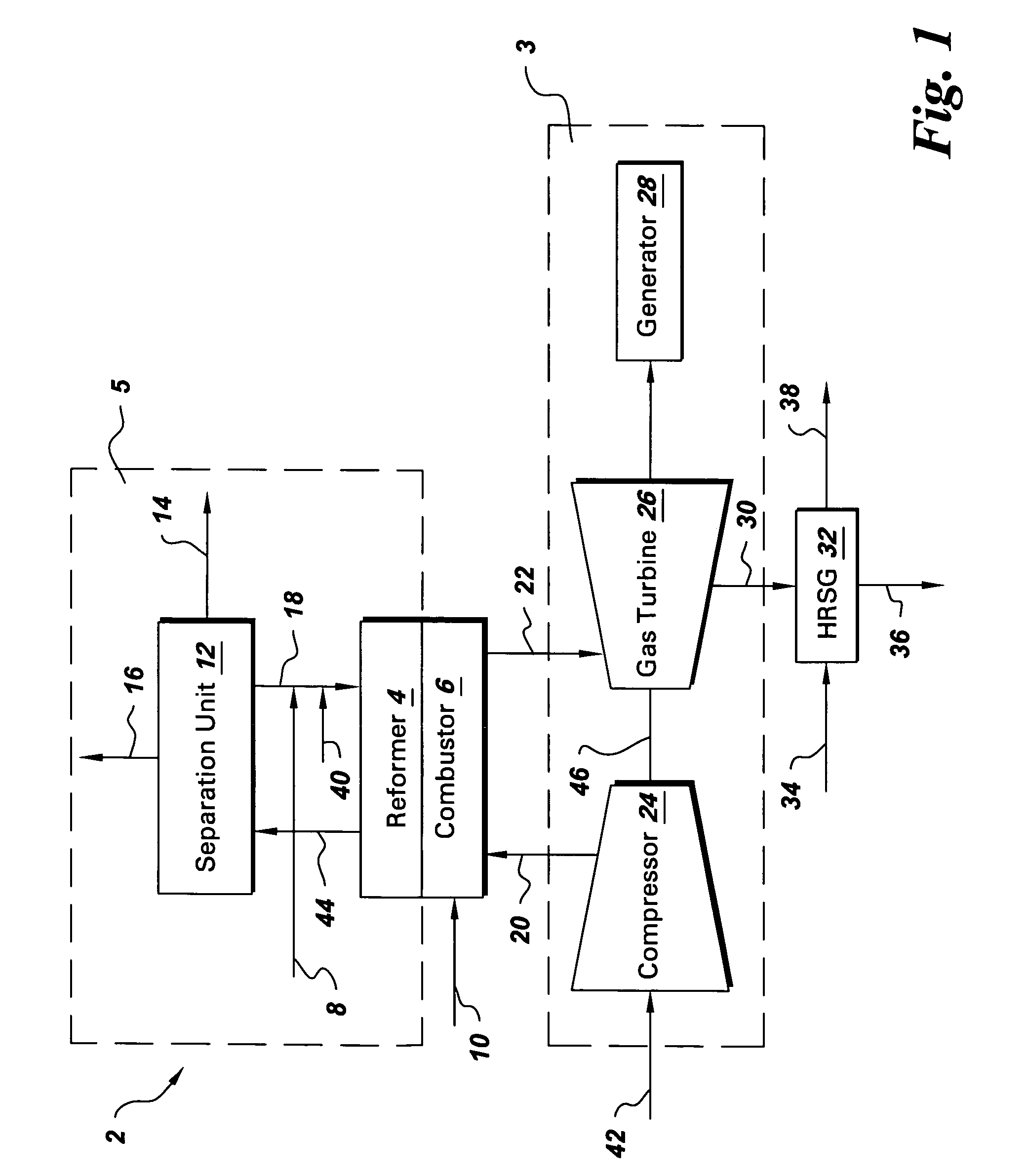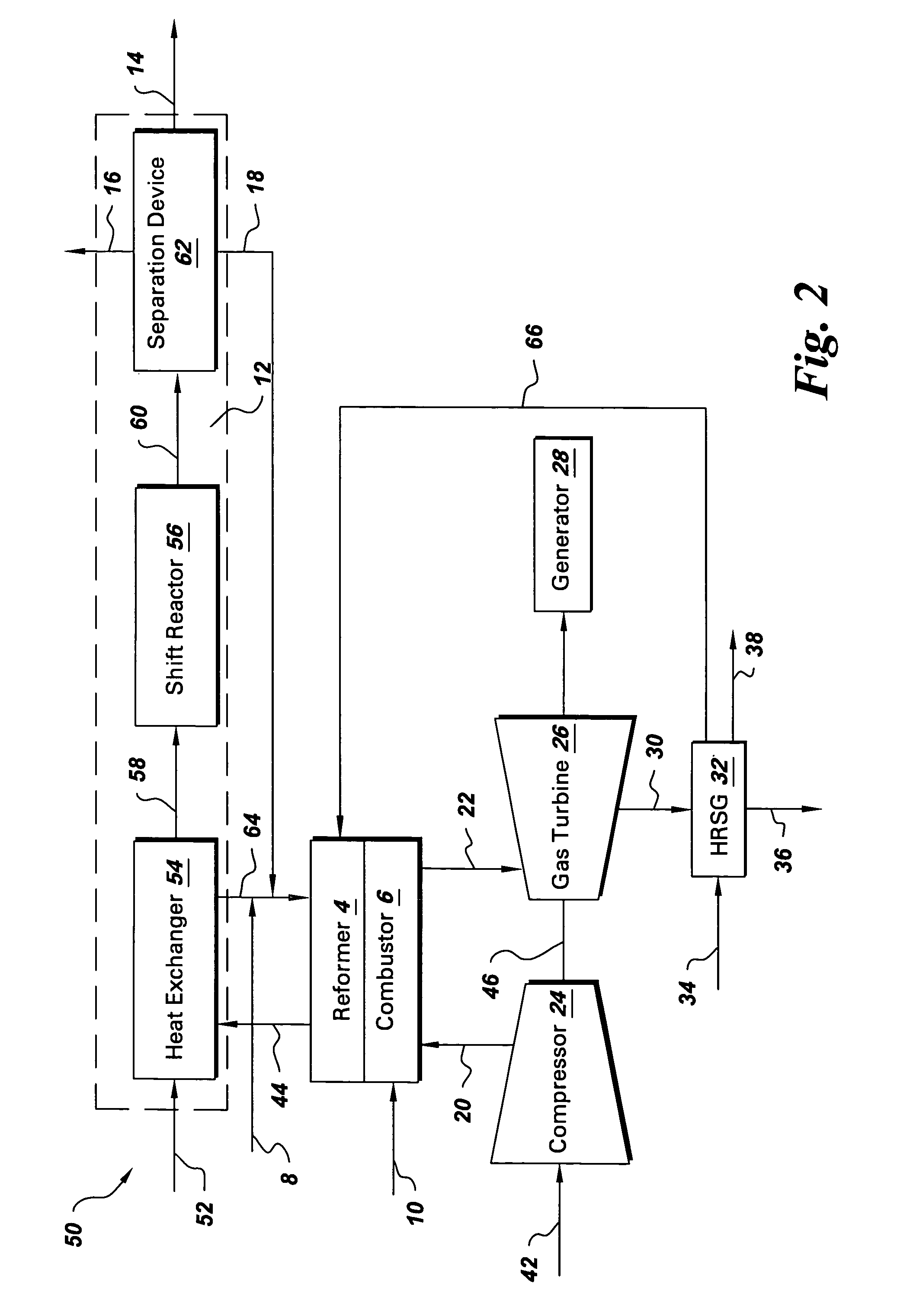System and method for co-production of hydrogen and electrical energy
a technology of co-production and hydrogen, applied in the field of energy generation systems, can solve the problems of high nitrous oxide production and emission, large amount of nitrous oxide, and high process energy consumption
- Summary
- Abstract
- Description
- Claims
- Application Information
AI Technical Summary
Benefits of technology
Problems solved by technology
Method used
Image
Examples
Embodiment Construction
[0018]FIG. 1 schematically represents an exemplary co-production system 2 for producing hydrogen and electrical energy including a turbine portion 3 and a hydrogen generation portion 5. The hydrogen generation portion includes a reformer 4, and a separation unit 12. The turbine portion includes a combustor 6, a compressor 24, a gas turbine 26, and a rotor 46, by which rotor, turbine 26 drives the compressor 24. The reformer 4 is coupled with the combustor 6, wherein the heat of combustion from the combustor 6 is utilized in the reforming process in the reformer 4. As explained in some detail below, while the basic components of the co-production system 2 are mostly well known, efficiency improvements in relation to known systems are obtained through strategic interconnection of system components with recirculation flow paths to enhance performance and efficiency of the system. The efficiency of a co-production system is enhanced by recovering the energy from the exhaust streams from...
PUM
| Property | Measurement | Unit |
|---|---|---|
| temperature | aaaaa | aaaaa |
| temperature | aaaaa | aaaaa |
| electrical | aaaaa | aaaaa |
Abstract
Description
Claims
Application Information
 Login to View More
Login to View More - R&D
- Intellectual Property
- Life Sciences
- Materials
- Tech Scout
- Unparalleled Data Quality
- Higher Quality Content
- 60% Fewer Hallucinations
Browse by: Latest US Patents, China's latest patents, Technical Efficacy Thesaurus, Application Domain, Technology Topic, Popular Technical Reports.
© 2025 PatSnap. All rights reserved.Legal|Privacy policy|Modern Slavery Act Transparency Statement|Sitemap|About US| Contact US: help@patsnap.com



